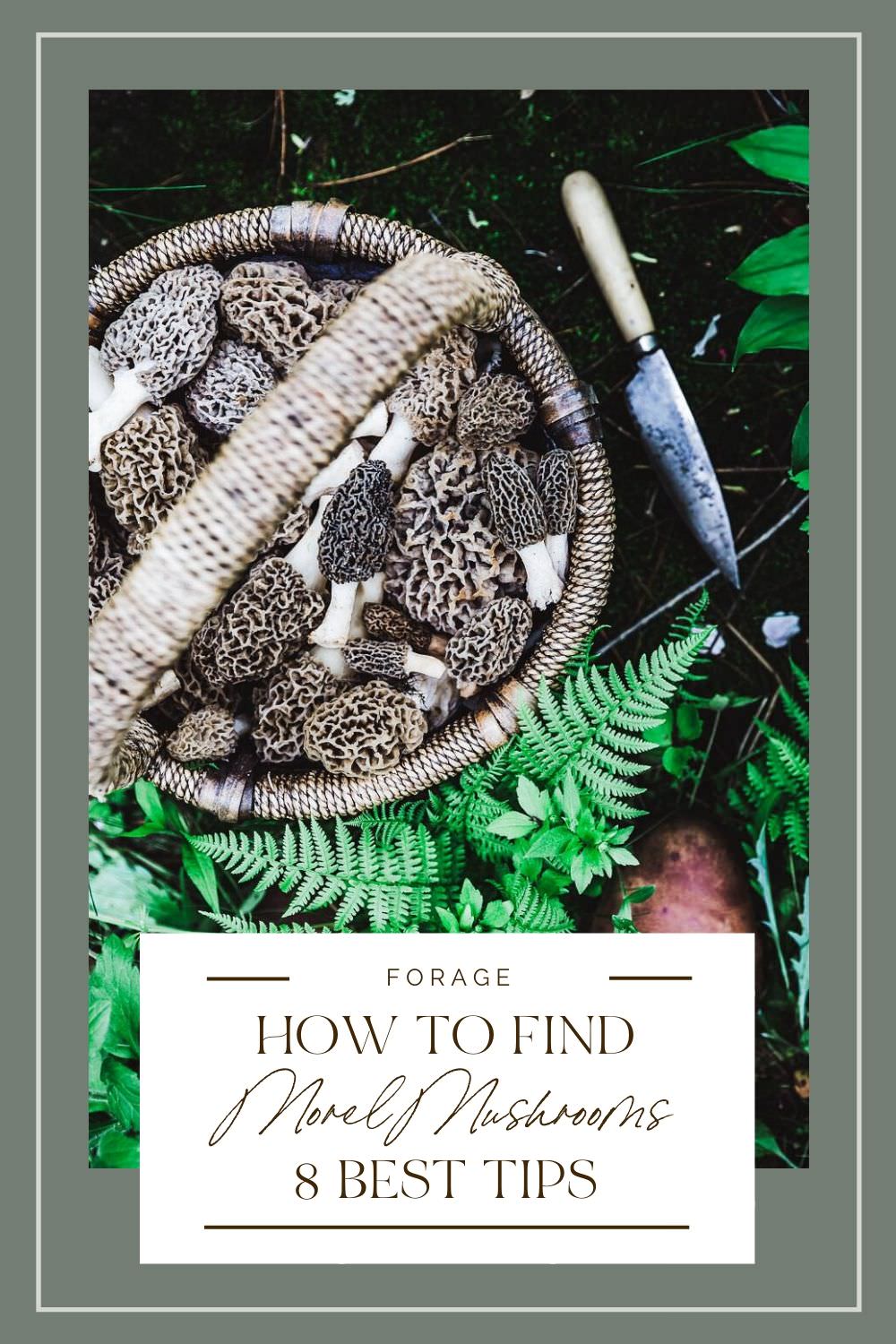I interviewed the best morel hunter I know in order to learn his mushroom-hunting secrets from 20 years of experience. Luckily, I live with him, so it wasn’t too difficult to track him down. Keep reading to get Matt’s 8 best tips to find morels.
Every time I talk about morels or post a picture of them, people reach out asking how to find them. The truth is that Matt finds them all. My mom and I love to go with, but he usually does the hunting. He all but has to point them out for me, and then be like good job, you did it!
The wild thing about this is that he can’t eat them. He’s straight up allergic to morels. Every year, he entertains the idea of eating one, because they smell so good when yours truly enjoys the fruits of his labor by frying them up in butter.
After 10 years since eating his last morel, he decided to test the waters last spring. Though outright delicious, he’s still very-much allergic. This isn’t a kill-you allergy, but it’s not exactly pleasant. So, please be cautious eating anything new!
And even though he’s still very-much allergic, he still very-much loves to find morels. He’s a character, that one. I eat what I can, we give away to friends and family, and he sells the rest to a wholesaler that supplies restaurants.
So, without further ado, here are Matt’s 8 Tips for how to find morels, written by me.
How To Find Morels: 8 Best Tips
- Know what you’re looking for. This really isn’t one of his tips (so, you’ll see there are actually 9 here). However, I can’t proceed without stressing that it’s extremely important you only forage a plant you’re certain you’re able to identify. While morels are fairly easy to identify, they do have a poisonous look-alike, the false morel.
- Look for elm trees. You want elm trees that are dying or dead but still have some bark. We’ve found the bigger the tree the better. If you can, scope out trees during winter, so you have more visibility (i.e., less foliage from surrounding forest to view through). Others reference oak, ash, and apple trees, but Matt usually focuses on elms.
- Look up first. In order to find morels, look up first. Say what? If you’re thinking, I thought morels grow on the ground, you’re right. They do, but we want to find those elm trees first instead of blindly walking through the woods. If you weren’t able to get out in winter, see if you can spot dying elms along the tree line. This might sound difficult, but it’s actually fairly easy once you know what to look for. And here is what you’re looking for:
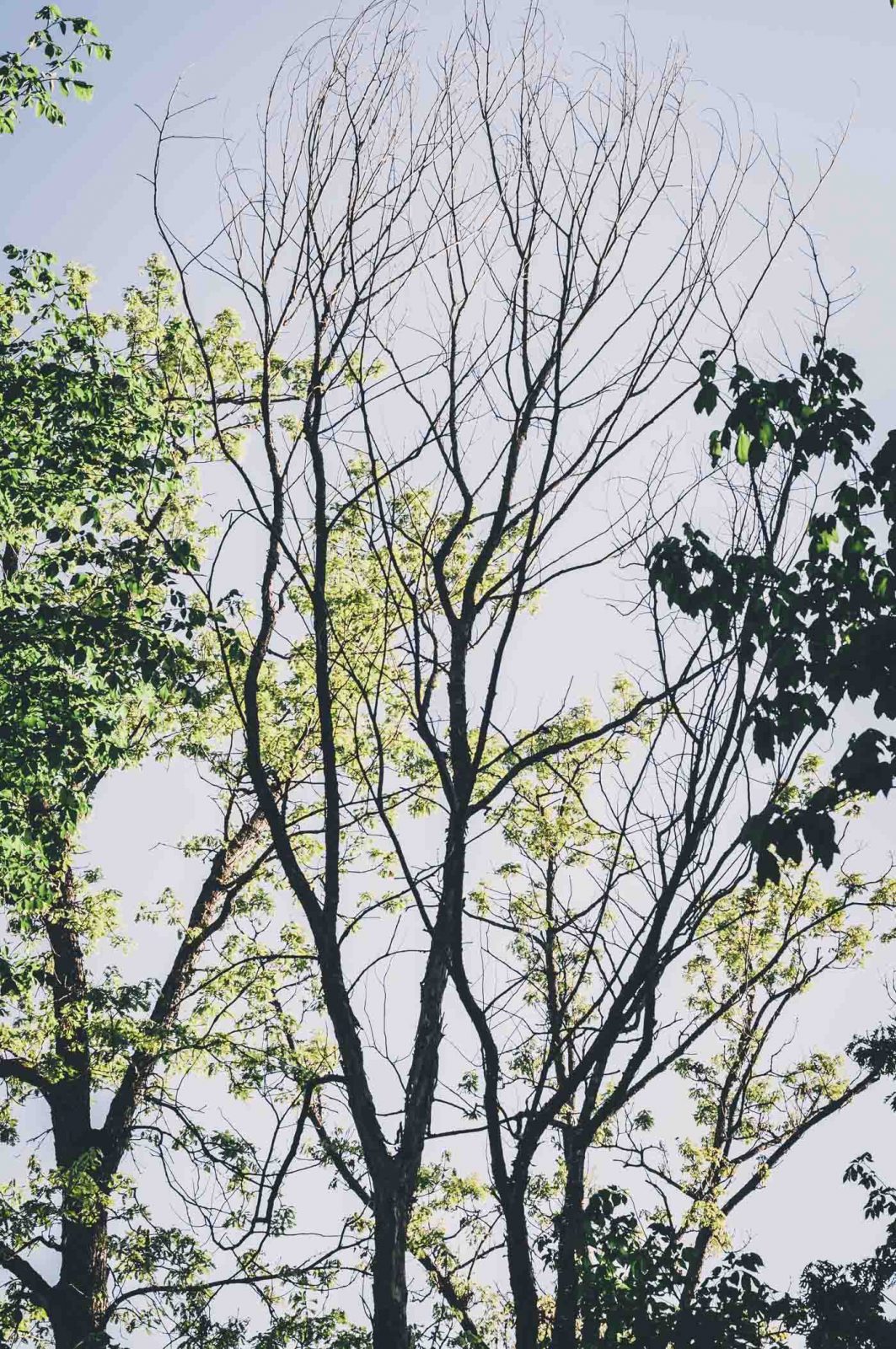
- Then look down, and sooner than you think! Don’t walk straight up to the tree without looking or you might accidentally step on a mushroom. (Oy, this rookie has been there!) Most mushrooms are within 10-15 feet of the tree. However, if you’re on a slope, spores can travel quite a ways. Be on the lookout for mushrooms sooner than you think.
- In early spring, check south-facing slopes first. You want south-facing slopes, because the soil warms the quickest in these areas, so they are the first to produce mushrooms. Later in the season, go deeper into the forest and check north-facing slopes.
- Start looking Mother’s Day. In the US, you’ll find morels March-May. Start looking once night-time temps are above 40. Where we’re located in the midwest, that’s around Mother’s Day. However, there’s no guarantee as morels are quite mysterious. This year, we haven’t seen a morel and it’s a week after Mother’s Day. There’s a reason these tricksters are not cultivated commercially.
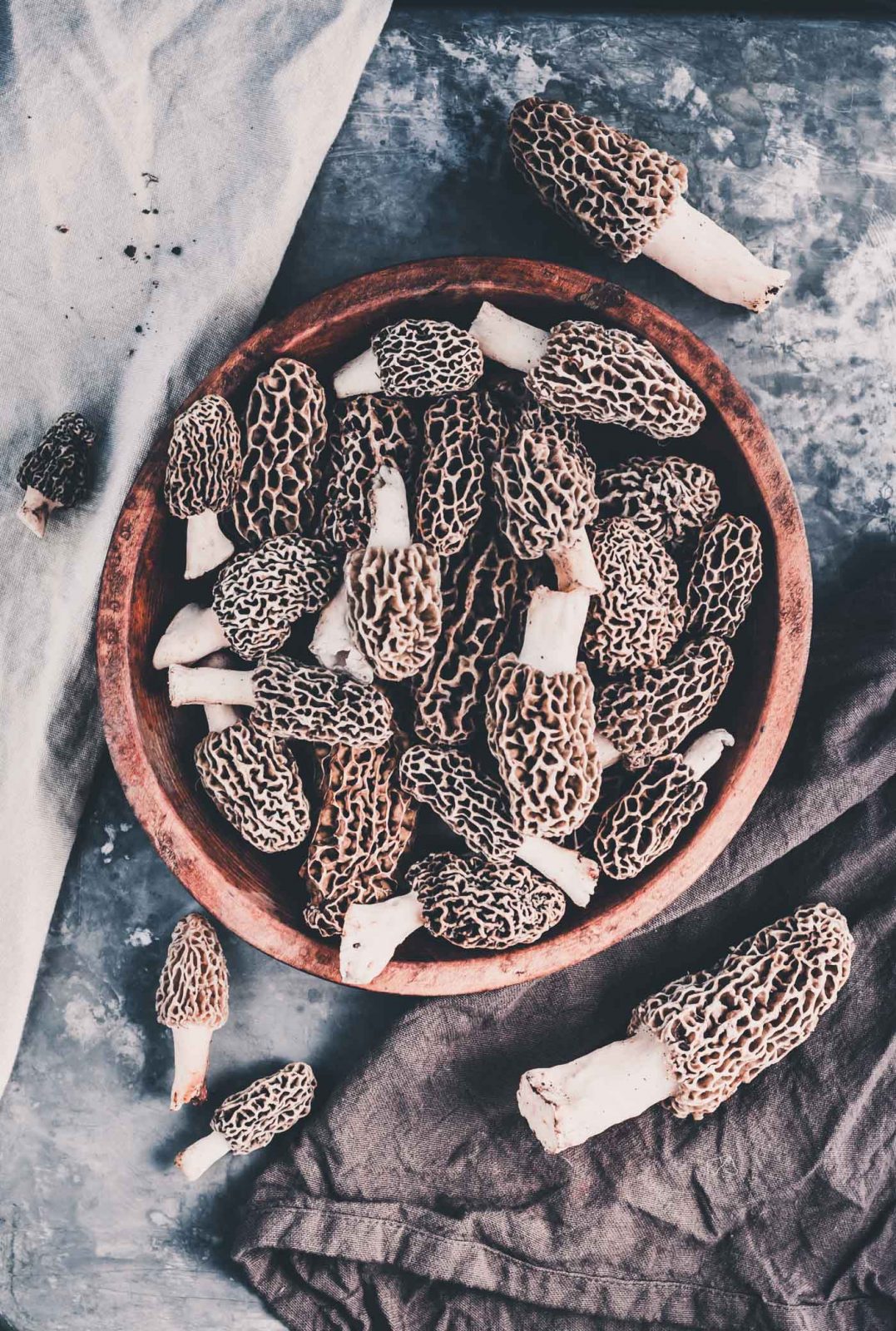
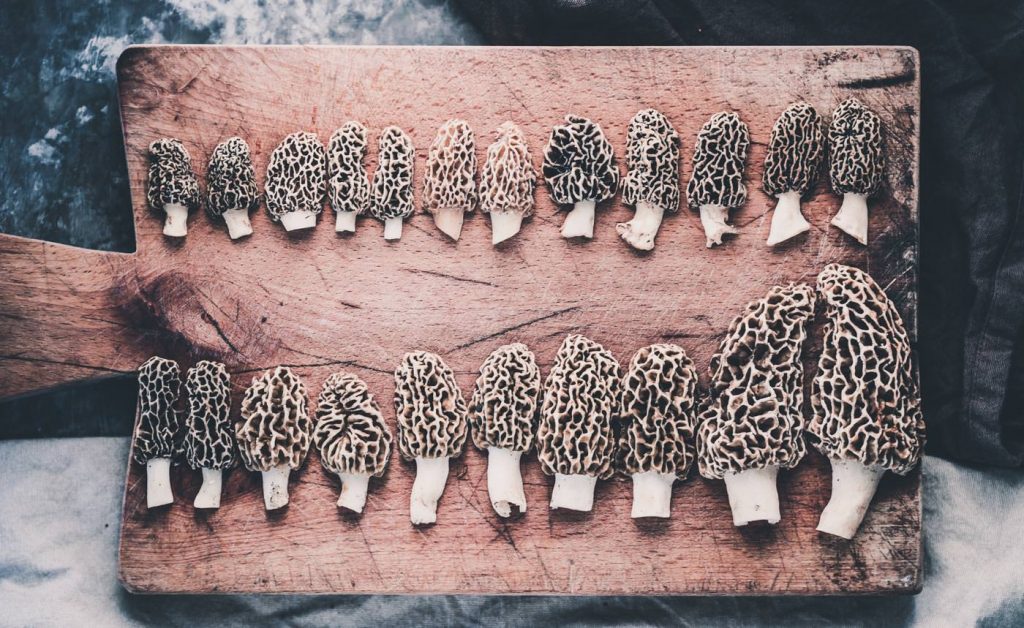
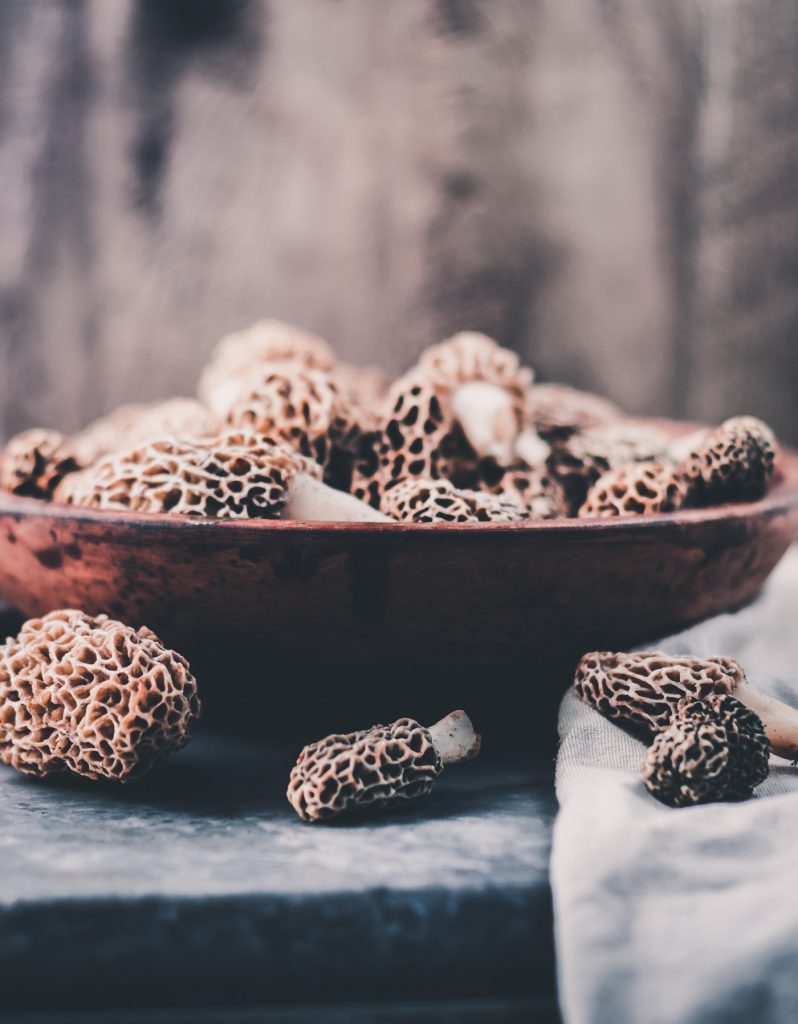
- Rain, warmer spring temps, & humidity. These are all solid indications of morels. Whenever we get a good rain and day temps start hitting 70s and 80s, Matt’s out hunting. While these are our triggers, what you’re looking for is soil temps in 50s and high humidity of the forest.
- Remember your location. If you’re lucky enough to find morels, remember your location. They’ll often come back in the same spot next year, though again, no guarantee here!
- Persistence. Did I mention no guarantee? That’s because we’re working with a complex symbiotic relationship between the mycelium and trees. And that’s what makes morels so mysterious. Experts can’t quite agree on the mechanisms behind their growth, so don’t give up! Their mystical nature is what makes them so prized, after all.
Do you forage morels? Have any good tips to add to this list? If you found this information helpful, I’d love it if you shared it with your pals.
